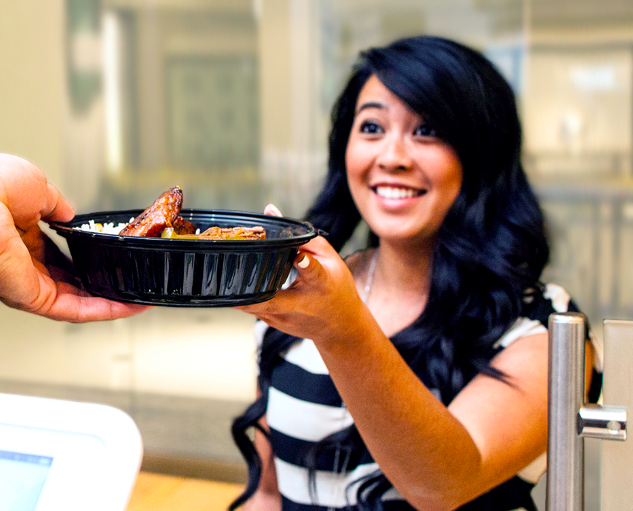
The workplace experience is no longer one-size-fits-all.
Today we have hybrid schedules, distributed teams, satellite offices, and higher expectations from both employers and employees. In order to keep up with all of the modern changes, corporate food service operations have evolved to provide what feels like a never-ending number of options.
But taking the time to understand the nuances of each is crucial if you’re planning to implement a new solution for your workplace. Check out our list below and learn about the different corporate food service operations you can take advantage of.
Food service operations can cover a lot of different areas. In corporate settings, food service operations are designed to meet the needs of the workplace environment they’re serving. This could mean anything from your snack options to a 24 hour full-service cafeteria that meets every dietary preference.
The types of food service operations in the corporate world range from low commitment solutions to fully-staffed operations. There are a lot of options to consider and the right choice depends on your company size, space, budget, and employee preferences.
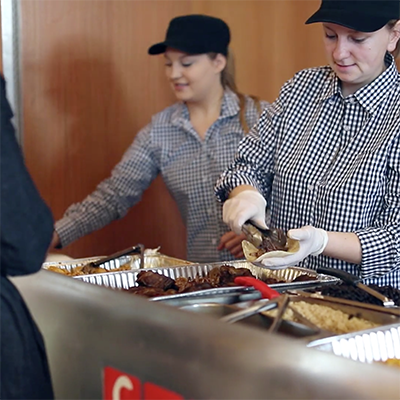
Daily Popup restaurants are one of the best problem solvers for businesses without a dedicated place to eat. They can easily be set up and running in a couple of weeks within a small amount of space (like a break room or lobby).
How do Popup restaurants work? A new local restaurant will bring in a unique menu offering each day. Lunch is served by the restaurant's staff, so there are no overhead costs, and the meals can be paid for by employer subsidy, by the employees themselves, or a mix of both. This tends to work great for buildings or companies with a few hundred employees.
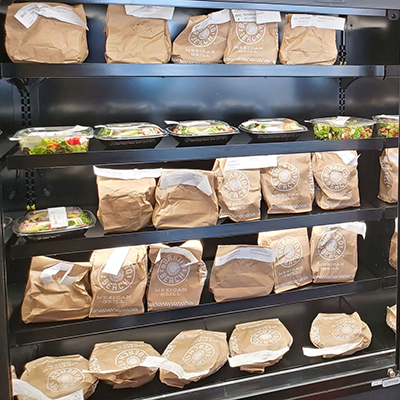
You can’t walk down the sidewalk of any city without seeing an advertisement or discount code for one of the major delivery platforms. The problem? It’s a very individualized experience.
To get the most out of an office lunch delivery program, it’s becoming standard to partner with a company that can provide you with consolidated ordering from multiple local options. Food service operation providers can also offer a single delivery driver, reducing fees, taking out the guesswork and resulting in a lunch break that’s always on time.

We all know what a cafeteria is, it’s a food service operation in a building where a lot of people need to eat. Places like hospitals, universities, or large companies will most often have them.
If you’re looking to have a dedicated dining space with a long-term commitment, a full-service corporate cafeteria with resident and rotating restaurants is a great option to make that happen. They’ll take a bit longer than other options to implement, but they can accommodate all three meals and operate around the clock.
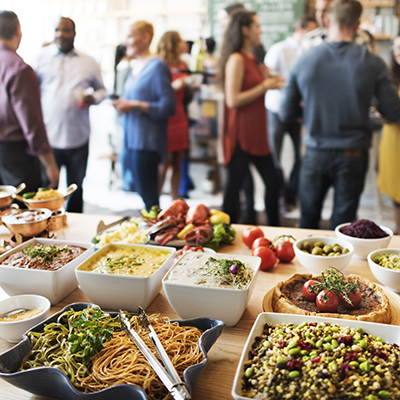
Employer-paid catering programs bring restaurant quality meals to your workplace for recurring team lunches, meetings, or large events.
They’re always going to be paid for fully by the employer and can feature anything from local restaurants to professional white-glove catering. Employer-paid food programs require an investment, but it’s one that can quickly pay off if you’re partnered with the right company.
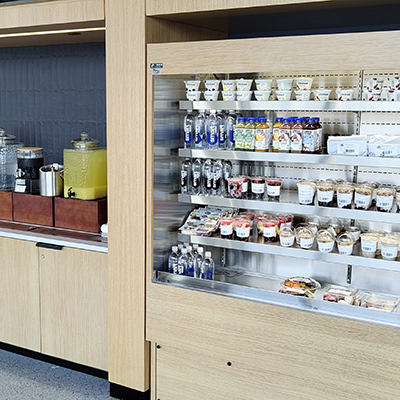
Office pantry programs stock your workplace with snacks, beverages, and grab-and-go items that employees can access throughout the day.
Modern pantry services go beyond the traditional vending machine model. They allow you to get specific options that your employees want, like healthy snacks, specialty beverage machines, fresh fruit, or convenient breakfast items that keep your team fueled between meals.
Use the chart below to compare and contrast the different types of food service operations:
If one or more of these options sounds right for your workplace, Fooda is ready to help you get them implemented. Get in contact with us today and let’s talk about lunch!
Costs will vary by the type and frequency of the food service operations you want to offer. With Fooda, you have the ability to design your own food program and find a solution that’s perfect for the budget you’re working with.
Transitioning between food service operations requires planning but is generally straightforward. Start by surveying employees about their satisfaction with current options and preferences for alternatives. Fooda specializes in seamless transitions and can help you evaluate which services best fit your evolving needs.